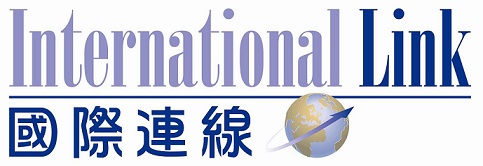澳大公佈五年發展規劃
澳大公佈五年發展規劃
適逢今年是澳門大學四十周年,該校於日前舉行新聞發佈會,公佈《澳門大學五年發展規劃(2021/22-2025/26學年)》(以下簡稱「五年規劃」)。發佈會由澳門大學校長宋永華主持,從目標與戰略、策略與措施、支持與保障等方面重點介紹澳大未來五年的發展綱領和藍圖。

配合國家「十四五」規劃和二零三五年遠景目標的公佈,以及澳門特別行政區經濟和社會發展第二個五年規劃(2021-2025年)的啟動,澳門大學制定五年規劃,作為引領大學發展的藍圖和綱領。未來五年,澳大將以立足澳門、共建灣區、融入國家、走向世界為發展定位,通過以學生為本的優質教育、具國際影響力的重點研究,以及高水平的社會服務,矢志成為一所國際公認的卓越大學。澳大透過落實保持適切性、發揮影響力、擴大顯著性、追求卓越度的R.I.S.E總體發展戰略,重點提出五個方面的策略措施。
第一、持續完善高水平的人才培養體系。澳大將擴大學生規模,重點增加研究生和非本地生的人數,深化實踐「四位一體」的協同育人模式,全面提升研究生教育,以及推動學科交叉發展,完善學科佈局和建設;第二、推進協同、開放、創新的科研戰略佈局。澳大將以問題導向、學科交叉、協同創新、知識轉化為發展策略,部署以「四個三」為骨幹的戰略佈局,建設多個國家和區域的重大科研平台;第三、構建「五位一體」的成果轉化體系。澳大將充分發揮大學三間國家重點實驗室的引領作用,從創新、服務、管理、培育、實踐等維度夯實和構建高水平的產學研平台,推動科技創新和成果轉化;第四、拓展優質高效的國際化合作網絡。澳大將重點深化與葡語系和英語系國家的高等教育合作,鞏固和拓展國際生源。進一步加強與內地的交流合作,促進落實更多高水平的雙聯培養項目;第五、打造立足澳門的社會服務平台。澳大將構建以『推動「一國兩制」創新研究』、「培養社會發展所需人才」、「打造高端智庫」、「助力澳門落實發展定位」、「推動資源共享」為核心的社會服務體系。
在支持與保障方面,澳大將建設高水平的教學人員隊伍,配合特區政府循序漸進推動大學的行政制度改革,提升大學財務自我保障能力。進一步優化大學空間規劃,推動多個校園重點建設項目的落實。此外,澳大將緊抓橫琴粵澳深度合作區的發展機遇,重點完善及利用好珠海澳大科技研究院的教學和科研空間,加強產學研合作,推動成果轉化,並積極為澳大師生爭取更便利的學習、科研、交流和生活的條件。
經過四十年的發展,澳門大學在中央和特區政府的大力支持下,已成為大灣區一所富有特色和實力的綜合性大學,國際聲譽不斷提升。目前澳大在THE世界大學排名二百零一至二百五十,在QS世界大學排名三百二十二位。展望未來,澳門大學將進一步加強責任擔當,切實助力澳門的經濟適度多元可持續發展,更好服務國家發展所需,追求卓越、尋求突破,推動大學發展再上新的台階。

---------------------------------------------
UM releases its Five-Year Development Plan
This year marks the 40th anniversary of the University of Macau (UM). The university held a press conference today (23 December) to release its Five-Year Development Plan (Academic Years 2021/22 to 2025/26). The press conference was chaired by Rector Yonghua Song. He introduced UM’s development goals and strategies, measures, as well as supports and assurances in the next five years to the audience.
UM’s Five-Year Development Plan is based on the nation’s 14th Five-Year Plan and the Vision for the Year 2035, and Second Five-Year Development Plan of the Macao SAR (2021-2025). UM’s Five-Year Development Plan is seen as the university’s blueprint and outline for development. In the next five years, UM will take “being rooted in Macao, taking part in the development of the Greater Bay Area, integrating into the nation and going international” as its development positioning. UM aspires to become an internationally recognised university of excellence by implementing quality student-centred education, key research subjects with international impact and a high standard of community services. By implementing the “R.I.S.E.” (Relevance, Impact, Significance and Excellence) as an overall development strategy, UM will carry out its focused strategies from five aspects:
Firstly, to continually strengthen the high-level talent nurturing system. UM will expand its student body appropriately by focusing on increasing the number of postgraduate and non-local students, will deepen the “4-in-1” integrated education model, and improving postgraduate education comprehensively, as well as promoting interdisciplinary development and improving disciplinary layout and development;
Secondly, to promote a collaborative, open, and innovative strategic layout for research. UM will implement the “P.I.C.K.” strategy (Problem Orientation, Interdisciplinary Interaction, Collaborative Innovation, Knowledge Translation) for research development; and the university will deploy its strategic layout based on the “3+3+3+3” model, and develop multiple key national and regional research platforms;
Thirdly, to develop the “5-in-1” research result transfer system. UM will fully explore the leading role of its three State Key Laboratories, will build a high-level industry-academia-research platform incorporating the dimensions of innovation, service, management, cultivation and practice, to promote technological innovation and research result transfer;
Fourthly, to expand the quality and efficient international cooperation networks. UM will deepen its higher education cooperation with the Portuguese-speaking and English-speaking countries, will consolidate and expand UM’s international student body. UM will also further strengthen its exchanges and cooperation with the mainland, and explore more dual degree and joint programmes;
Fifthly, to develop platforms to serve the local community. UM will develop a community service system that centres on advancing innovative research concerning the “One Country, Two Systems” principle, cultivating talents demanded by social development, advancing high-level think-tanks, facilitating Macao’s development in accordance with its positioning, and promoting the sharing of resources.
In terms of supports and assurances, UM will develop high-standard teams of talents, and will gradually implement the public university administrative system reform in accordance with the Macao SAR government, and strengthen UM’s capabilities of financial self-reliance. Furthermore, UM will utilise the university’s space planning and will conduct multiple campus key construction projects. Moreover, UM will grasp the development opportunities offered by the Cooperation Zone, and will continue to improve the teaching and research facilities in the ZUMRI, and strengthen the collaborations of Industry-Academia-Research, promote the transfer of research achievements, as well as to bring more learning, research and living opportunities for the university’s staff members and students.
Through 40 years of development, with the support of the central and local governments, UM has become a comprehensive university with features and strengths in the Greater Bay Area, along with its continually improving international reputation. Currently, UM is ranked 201-250 in the Times Higher Education (THE) World University Rankings, and 322nd in Quacquarelli Symonds (QS) World University Rankings. In the future, UM will continue to strengthen its responsibilities to assist Macao’s sustainable development with moderate economic diversification, and better serve the demand of the nation’s development, as well as to continuously pursue excellence and breakthroughs to impel UM’s development to a new level.
Source: University of Macau, Strategy and Planning Office
- Log in to post comments





